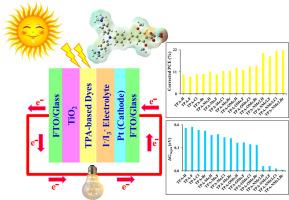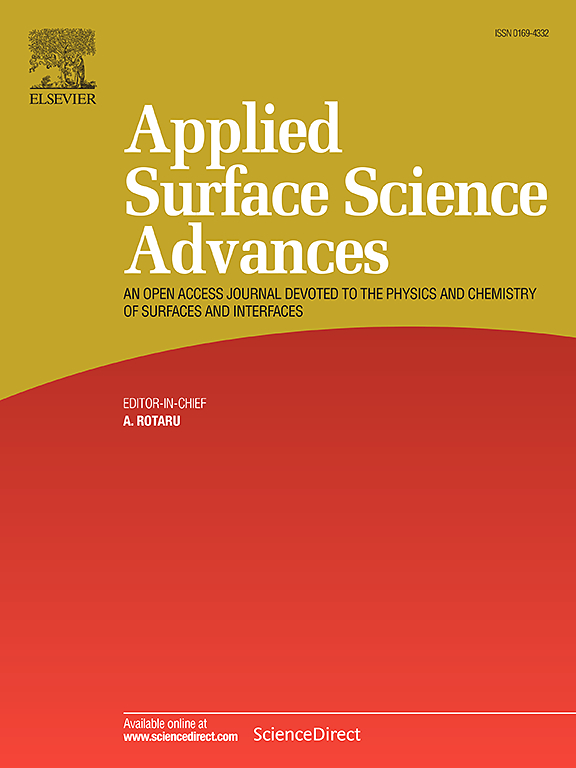Development of high-efficiency D-π-A dye photosensitizers for dye-sensitized solar cells: Substantial influence of electronic properties
IF 8.7
Q1 CHEMISTRY, PHYSICAL
引用次数: 0
Abstract
To achieve high efficiency dye-sensitized solar cells (DSSCs), some dye photosensitizers were designed with an architecture of donor-π-acceptor (D-π-A) using CH3 (Me), OCH3 (OMe), and N(CH3)2 (NMe2) as electron donor groups while F, Cl, and Br as electron acceptors that were attached to the triphenylamine (TPA)-based dye. The electronic effects of substituents were scrutinized on the electronic, optical, charge transfer, stability, and photovoltaic features of dyes used in DSSC devices by density functional theory (DFT) and time-dependent DFT (D-DFT) computations. To systematically determine the best computational method, six different functionals and two basis sets were examined, confirming the M06-D3/6-31G(d,p) computational method afforded the most favorable results. The UV-Vis absorption spectra revealed values within the UV-visible and near-infrared regions, confirming these materials would be exceptional light-responsive photosensitizers for DSSCs. Negative ΔGinjection values of all molecules approved their spontaneous electron injection toward the TiO2 semiconductor in photoanode. Higher photovoltaic parameters were achieved upon attachment of Me and OMe, NMe2 substituents on the TPA-H dye. Lastly, the rationally developed molecules could be applied as next-generation dyes in fabrication of high efficiency DSSC photovoltaics, particularly the TPA-NMe2,Br with the most preferred optoelectronic and photovoltaic properties was chosen as the most ideal dye photosensitizer for DSSCs.

染料敏化太阳能电池用高效D-π-A染料光敏剂的研制:电子性能的实质性影响
为了实现高效染料敏化太阳能电池(DSSCs),以CH3 (Me)、OCH3 (OMe)和N(CH3)2 (NMe2)为电子给基,F、Cl和Br为电子受体,设计了一些染料光敏剂,其结构为供体-π-受体(D-π-A),并与三苯胺(TPA)基染料结合。通过密度泛函理论(DFT)和时变DFT (D-DFT)计算,研究了取代基的电子效应对DSSC器件中染料的电子、光学、电荷转移、稳定性和光伏特性的影响。为了系统地确定最佳计算方法,研究了6种不同的泛函和2个基集,确定了M06-D3/6-31G(d,p)计算方法的最佳结果。紫外可见吸收光谱在紫外可见区和近红外区显示了λmaxabs值,证实了这些材料将是DSSCs的特殊光响应光敏剂。所有分子的负ΔGinjection值表明它们自发地向光阳极中的TiO2半导体注入电子。在TPA-H染料上附着Me和OMe, NMe2取代基可以获得更高的光伏参数。最后,合理开发的分子可作为下一代染料用于制备高效DSSC光伏材料,特别是具有最优光电和光伏性能的TPA-NMe2,Br被选为DSSC最理想的染料光敏剂。
本文章由计算机程序翻译,如有差异,请以英文原文为准。
求助全文
约1分钟内获得全文
求助全文

 求助内容:
求助内容: 应助结果提醒方式:
应助结果提醒方式:


